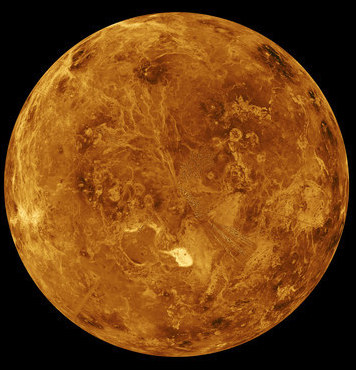Oceans of carbon dioxide could have shaped the surface of Venus
Venus may have once possessed strange oceans of carbon dioxide fluid that helped shape the planet’s surface, researchers revealed on Monday. Venus is often described as Earth’s twin planet because it is the world closest to Earth in size, mass, distance and chemical makeup. However, whereas Earth is a haven for life, Venus is typically described as hellish, with a crushing atmosphere and clouds of corrosive sulfuric acid floating over a rocky desert surface hot enough to melt lead. Scientists now suggest that Venus might have once possessed bizarre oceans of carbon dioxide fluid.
Presently, the atmosphere of Venus is mostly carbon dioxide, 96.5 percent by volume.
Lead study author Dima Bolmatov
Carbon dioxide is common on Venus. Most familiar on Earth as a greenhouse gas that traps heat, carbon dioxide is exhaled by animals and used by plants in photosynthesis. While it can exist as a solid, liquid and gas, past a critical point of combined temperature and pressure, carbon dioxide can enter a “supercritical” state, dissolving materials like a liquid, but flowing like a gas. The atmospheric pressure on the surface of Venus is currently more than 90 times that of Earth and under such conditions, supercritical carbon dioxide with liquidlike behavior might have formed. “This makes it plausible that geological features on Venus like rift valleys, riverlike beds, and plains are the fingerprints of near-surface activity of liquidlike supercritical carbon dioxide,” said study leader Dima Bolmatov.

venus surface Science